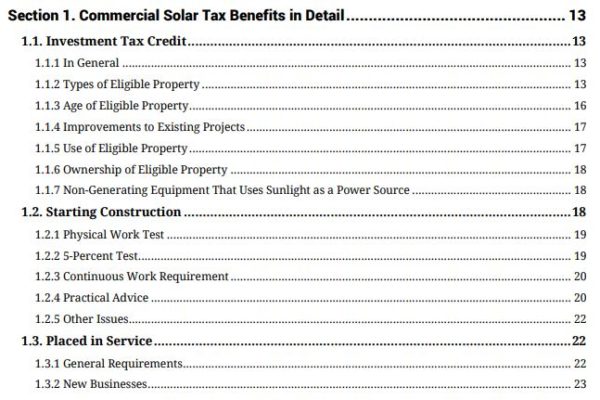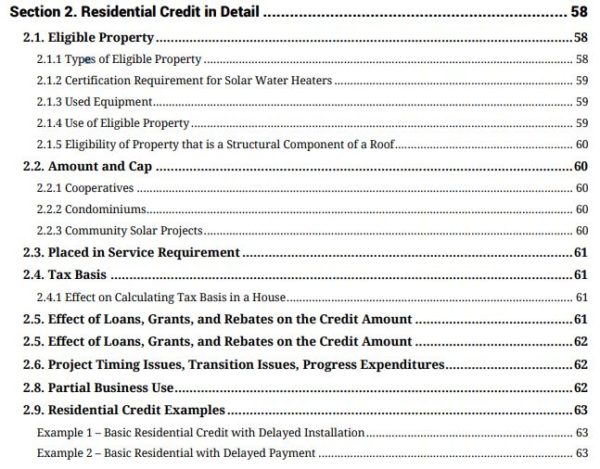The fine art of solar-powered finance for business in the United States involves learning what the Investment Tax Credit and Accelerated Depreciation (.pdf) are, and then learning to dance with them. If you learn the dance, then you have a chance at getting up to 46% of your system’s costs back in the first year – before considering any state incentives or the value of electricity (which each add their own layers of complexity to the tax dynamics of a project’s cash flow).
In keeping with their mission focus of growing solar power, the Solar Energy Industries Association (SEIA) has released the 9.0 version of its Federal Tax Guide for Solar Energy (Executive Summary .pdf).

Some of the 9.0 version updates/new sections/reflections/etc:
- construction-start rules for solar projects
- various private letter rulings to solar companies
- final regulations on what parts of a solar project qualify as “real property” for REIT purposes
- 100% depreciation bonus
- new limits on interest deductions
- changes in the tax treatment of prepaid power contracts
- government grants
- an analysis of how the new base erosion anti-abuse tax (BEAT) could affect tax credits
- new rules for carry-backs and carry-forwards of unused tax benefits
- solar securitizations

This nature of federal tax support for solar power has led toward an industry specialized in creating tax equity partnerships between large financial firms and those who wish to capitalize on the long term cash flows generated by electricity sales. SEIA’s document is enough of a guideline to assist corporate customers in making the first broad steps toward comprehending whether their company’s tax situation could benefit from a solar power investment.

In additional to an analysis of the business world is the Residential Energy Credit breakdown. While not nearly as complex as business analysis, there are nuances that residential installations carry.
As the primary driver of solar power investment in United States, the federal government’s support at 30% – via grants in the late 2000s and tax benefits these days – has been part of almost 50 GW of installations. Gaining insight into its application has been the competitive edge of Wall Street firms for a decade now, and as a solar power developer in his 9-5 job, this author feels their understanding of these topics has been the most important aspect of these firms’ sales success.
This content is protected by copyright and may not be reused. If you want to cooperate with us and would like to reuse some of our content, please contact: editors@pv-magazine.com.









By submitting this form you agree to pv magazine using your data for the purposes of publishing your comment.
Your personal data will only be disclosed or otherwise transmitted to third parties for the purposes of spam filtering or if this is necessary for technical maintenance of the website. Any other transfer to third parties will not take place unless this is justified on the basis of applicable data protection regulations or if pv magazine is legally obliged to do so.
You may revoke this consent at any time with effect for the future, in which case your personal data will be deleted immediately. Otherwise, your data will be deleted if pv magazine has processed your request or the purpose of data storage is fulfilled.
Further information on data privacy can be found in our Data Protection Policy.